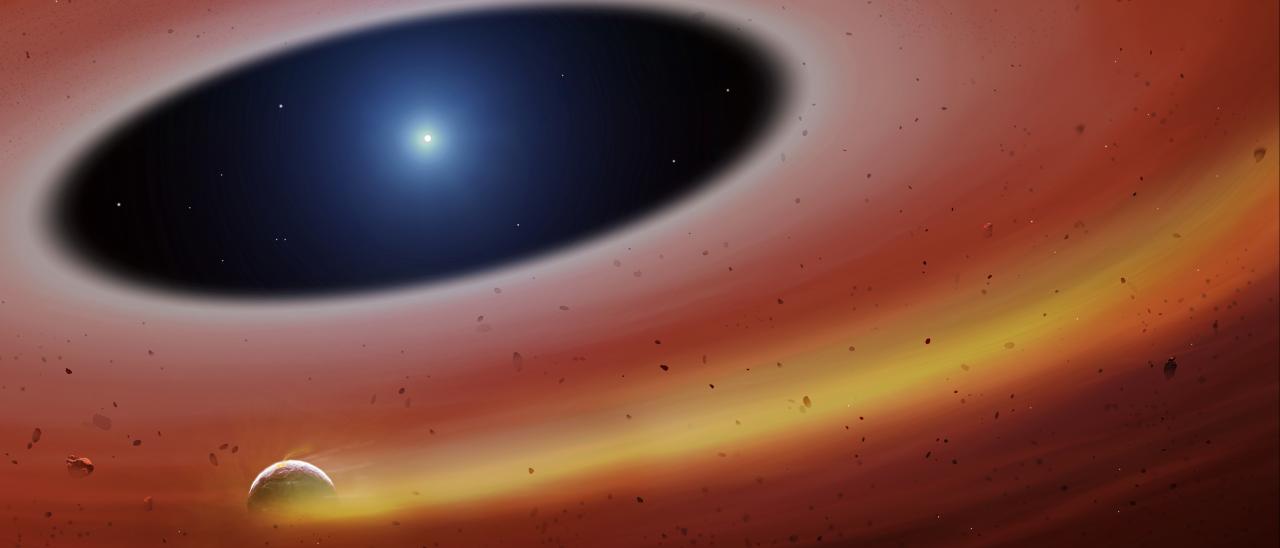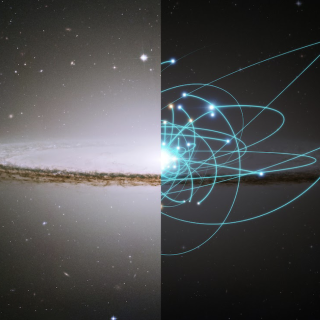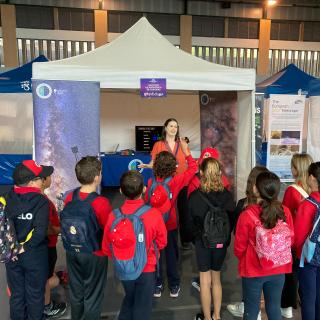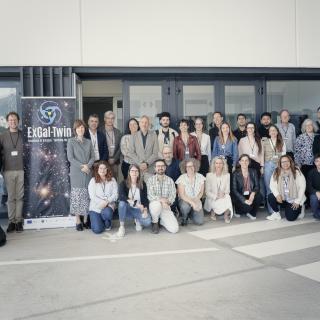A fragment of a planet that has survived the death of its star has been discovered, by a group of astronomers led by the University of Warwick and involving research staff from the IAC and ULL, in a disc of debris formed from destroyed planets which the star ultimately consumes.
The iron and nickel rich planetesimal survived a system-wide cataclysm that followed the death of its host star, SDSS J122859.93+104032.9. Believed to have once been part of a larger planet, its survival is all the more astonishing as it orbits closer to its star than previously thought possible, going around it once every two hours.
The discovery, reported today in the journal Science, is the first time that scientists have used spectroscopy to discover a solid body in orbit around a white dwarf, using subtle variations in the emitted light to identify additional gas that the planetesimal is generating.
Observations with GTC
Using OSIRIS spectrograph, installed in the Gran Telescopio Canarias (GTC), situated in the Roque de los Muchachos Observatory (Garafía, La Palma), the scientists studied a debris disc orbiting a white dwarf 410 light years away formed by the disruption of rocky bodies composed of elements such as iron, magnesium, silicon, and oxygen - the four key building blocks of the Earth and most rocky bodies. Within that disc they discovered a ring of gas streaming from a solid body, like a comet’s tail. This gas could either be generated by the body itself or by evaporating dust as it collides with small debris within the disc.
The astronomers estimate that this body has to be at least a kilometer in size, but could be as large as a few hundred kilometres in diameter, comparable to the largest asteroids known in the solar system.
White dwarfs are the remains of stars like our sun that have burnt all their fuel and shed their outer layers, leaving behind a dense core which slowly cools over time. This star has shrunk so dramatically that the planetesimal orbits within its sun’s original radius. Evidence suggests that it was once part of a larger body further out in its solar system and is likely to have been a planet torn apart as the star began its cooling process.
Lead author, Christopher Manser, a Research Fellow in the Department of Physics, said: "The star would have originally been about two solar masses, but now the white dwarf is only 70% of the mass of our Sun. It is also very small - roughly the size of the Earth - and this makes the star, and in general all white dwarfs, extremely dense”.
The white dwarf’s gravity is so strong - about 100,000 times that of the Earth’s - that a typical asteroid will be ripped apart by gravitational forces if it passes too close to the white dwarf.
Professor Boris Gaensicke, co-author from the Department of Physics, added: “The planetesimal we have discovered is deep into the gravitational well of the white dwarf, much closer to it than we would expect to find anything still alive. That is only possible because it must be very dense and/or very likely to have internal strength that holds it together, so we propose that it is composed largely of iron and nickel”. And he explained: “If it was pure iron it could survive where it lives now, but equally it could be a body that is rich in iron but with internal strength to hold it together, which is consistent with the planetesimal being a fairly massive fragment of a planet core. If correct, the original body was at least hundreds of kilometres in diameter because it is only at that point planets begin to differentiate - like oil on water - and have heavier elements sink to form a metallic core.”
The future of the Solar System
The discovery offers a hint as to what planets may reside in other solar systems, and a glimpse into the future of our own.
Christopher Manser said: “As stars age they grow into red giants, which ‘clean out’ much of the inner part of their planetary system. In our Solar System, the Sun will expand up to where the Earth currently orbits, and will wipe out Earth, Mercury, and Venus. Mars and beyond will survive and will move further out.
The general consensus is that 5-6 billion years from now, our Solar System will be a white dwarf in place of the Sun, orbited by Mars, Jupiter, Saturn, the outer planets, as well as asteroids and comets. Gravitational interactions are likely to happen in such remnants of planetary systems, meaning the bigger planets can easily nudge the smaller bodies onto an orbit that takes them close to the white dwarf, where they get shredded by its enormous gravity.
Pablo Rodríguez Gil, IAC/ULL researcher and co-author of the paper, pointed that "this planetesimal is the second found orbiting around a white dwarf very close to it. The previous one was located with the 'transit method' because the remains passed in front of the star and blocked part of its light. This technique is commonly used to discover exoplanets around stars similar to the Sun. To find such transits”, said Rodriguez Gil. "There has to be an almost perfect alignment between the plane of the debris disk and our line of sight. As this does not happen often, a large number of white dwarfs have to be observed to find the right geometry”.
Paula Izquierdo Sánchez, PhD student at IAC/ULL and co-author of the paper, highlights the fundamental role that GTC and its instruments have played in the study of these systems. “The team -she added- will continue to study other systems with debris disks very similar to the SDSS J122859.93+104032.9 to find other planetesimals orbiting white dwarfs, which will allow us to gather valuable information about their properties”.
Scientific article: Christopher J. Manser et al. “A planetesimal orbiting within the debris disc around a white dwarf star”, Science. 05 Apr 2019: Vol. 364, Issue 6435, pp. 66-69 DOI: 10.1126/science.aat5330
Contact at the IAC/ULL:
Pablo Rodríguez Gil (prguez [at] iac.es (prguez[at]iac[dot]es))
Paula Izquierdo Sánchez (paula.izquierdo [at] iac.es (paula[dot]izquierdo[at]iac[dot]es))




